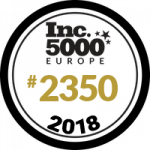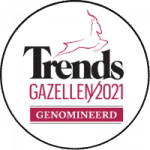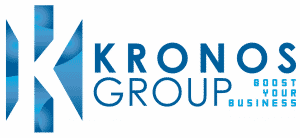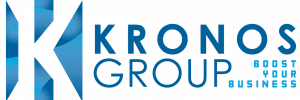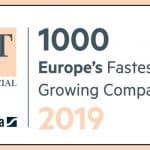Summary In the contemporary business environment, digital procurement is becoming increasingly popular and sought after by businesses around the world. The relationships …
Perfecting the system/human balance in procurement process automation
Automation is a highly compelling and divisive topic of discussion, not just in the context of procurement but also in general. It is often lauded as an all-inclusive solution for addressing inefficiencies in business processes, while contrary opinions about its overall effectiveness and ethics of usage also pose valid concerns.
However, automation has undoubtedly proven itself as a valuable addition to any organisational process, improving efficiency, reducing costs, and driving profits. As a core business process, procurement stands out as a prime candidate for automation—allowing businesses to reap all of the aforementioned rewards in one swoop.
The global procurement software market will be worth $9.5 billion by 2028, reflecting the value that businesses have placed on digitalising their procurement function and incorporating automation.
As procurement process automation becomes increasingly commonplace in the global business landscape, organisations that utilise it must carefully consider its capabilities and shortcomings in equal measure. Understanding what procurement automation can and cannot do for you is the first step in establishing effective processes.
This allows you to optimise the balance between the contribution of automation and the contribution of human resources to the procurement process—making it the best course of action for contemporary businesses.
Balancing system/human contribution in procurement process automation
While procurement features a large number of tasks and operations that can be optimised through automation, it is also home to processes that rely heavily on human judgement, ingenuity, and communication.
Assigning the right tasks for automation and reserving the processes that call for human involvement is the best way forward.

Procurement processes to automate
When it comes to procurement processes, the ideal choices that call for automation are repetitive, menial tasks that require little oversight and deliver lower value. Viable options for automation include purchase order processing, invoice management, purchase requisition, and contract management.
Each of these tasks requires little to no supervision and can be managed effectively with an automated system. Apart from the apparent benefits of automation like increased efficiency, minimised errors, improved transparency, and enhanced collaboration, it also enables the core procurement team to focus on more strategic, value-added tasks.
Procurement processes can vary widely between different businesses and industries and as such, automation efforts must be tailored to cater to their unique needs. When engaging in procurement automation, make sure to keep this in mind and evaluate your processes carefully to determine the best options.


Procurement processes to manually manage
Automation will free up a sizable amount of time from your procurement team so that they can engage in more complex, strategic tasks that require the human touch. For example, contract negotiations and supply chain risk management are nuanced functions that need human judgement and decision-making skills to deliver results.
Procurement processes that require human involvement can be supplemented by the outcomes of procurement automation in other areas. Procurement professionals can utilise the data collected by automated systems to inform their decision-making.
While automating the procurement process does promise exciting possibilities, you should always be strategic about its implementation. The simple ability to automate a process should not qualify it as a viable candidate for automation. Always evaluate its strategic value, resource consumption, and operational complexity before making a choice.

The changing face of procurement
As the procurement landscape evolves, the skills and knowledge required of procurement professionals also change. Soft skills and strategic thinking are much more valuable in an environment that utilises automation for everyday task completion.
It also means that other stakeholders involved in the procurement process, such as suppliers and partners must also keep up with these developments in procurement process automation. As more businesses begin to leverage their capabilities, these stakeholders will also have to improve their service delivery to match the efficiency of the supply chain.
Procurement automation initiatives are changing the entire procurement landscape. In these circumstances, businesses must be tactful in their approach to automation. Striking the right balance between manual and automated tasks can make a world of difference in achieving procurement excellence.

Get the right system/human balance for a procurement function that delivers value with Kronos Group
The ultimate objective of procurement automation is to establish a streamlined procurement function that provides a high level of efficiency and value to the business.
In this endeavour, you will have to perfect the balance between manual and automated tasks. This may not be an easy feat, which is why leveraging procurement consulting from Kronos Group could be of great benefit to you.
Our procurement professionals have decades of experience in helping businesses all over Europe and beyond optimise their procurement processes and achieve strategic objectives.
Elevate your procurement function by perfecting the system/human balance in procurement process automation with Kronos Group.
Fighting the effects of inflation with sourcing and procurement consultants
Stay up-to-date on the latest insights on procurement, finance, and project management.
Summary Strategic procurement has become a necessity in today’s business world and organisations try to remain competitive. Having the right procurement strategies …
Summary The world of consulting has been undergoing a massive transformation and management consulting jobs are experiencing the impacts of these changes. …
FAQ
An organisation’s procurement process can be automated with the following steps.
- Assess the current procurement process
- Identify areas that can be automated
- Find the right procurement software
- Orient the procurement team to its usage
- Ensure continuous monitoring and improvement
Learn more about the process of automating procurement here
The automation of the procurement function refers to the process of leveraging digital technologies to manage previously manual tasks in procurement. This can include workflows like purchase ordering, invoice management, and contract approval.
Procurement software solutions are software and digital tools that improve related processes by reducing manual work and enhancing the efficiency and accuracy of the procurement function.


